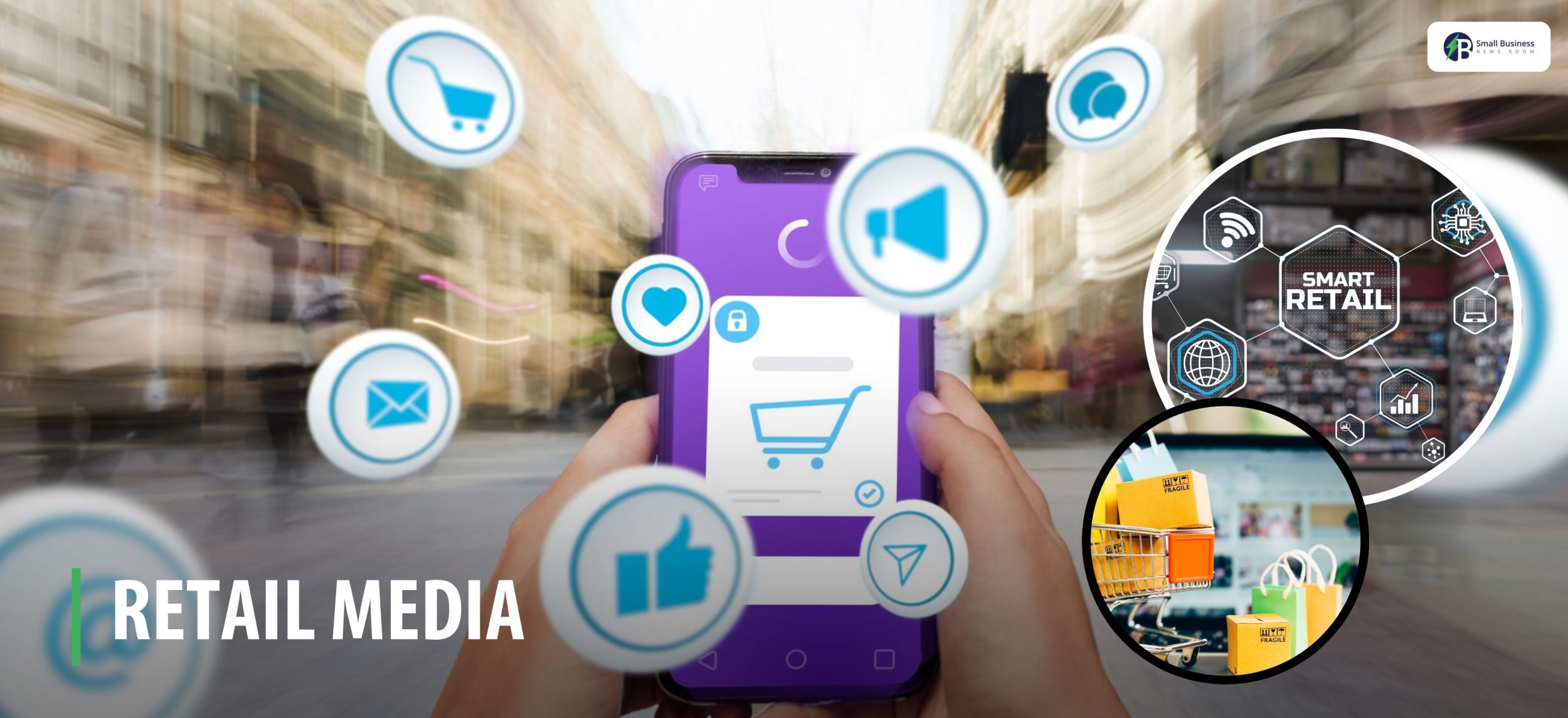Table Of Contents
- What Is Retail Media?
- Why Retail Media Matters
- The Rise of Retail Media Networks (RMNs)
- Key Players and Their Platforms
- The Expansion of Retail Media Networks
- Key Benefits of Retail Media
- Advantages For Brands
- Improved Customer Engagement
- How Does The Retail Media Work?
- Data-Driven Programmatic Advertising
- Targeting Mechanisms In Retail Media
- Optimization Through AI And Analytics
- Retail Media vs. Traditional Digital Advertising
- What Are The Challenges in Retail Media?
- Campaign Complexity
- Data Privacy and Transparency
- Ad Fatigue
- Omnichannel Integration
- Emerging Trends in Retail Media (2025 and Beyond)
- AI in Retail Media
- Voice Commerce
- Omnichannel Strategies
- Expanding Ad Formats
- How to Build a Successful Retail Media Strategy?
- 1. Select the Right Platforms
- 2. Segment Your Audience
- 3. Create Relevant Creative
- 4. Set Clear KPIs and Measure ROI
- 5. Integrate with Overall Marketing
- 6. Experiment and Iterate
- Case Studies: Retail Media in Action
- Future Outlook: The Impact of Retail Media on E-commerce
The Ultimate Guide to Retail Media: Strategies, Benefits, and Key Trends
Retail media is changing the landscape of shopper-brand interaction. It is showing ads that are both relevant and timely, exactly at the moment of purchase.
It combines retailers’ marketing and the sale of their digital assets, such as websites, apps, and electronic displays in stores, to advertisers. They are using first-party data to the fullest to drive impact.
Retail media has become the most efficient way for advertisers. Why? Because users cannot be tracked via third-party cookies. This further helps to achieve the return on investment and precision targeting they want.
Retail media advertising is on the rise! U.S. retail media ad spending expected to reach over $60 billion in 2025, growing at a compound annual rate of 20%.
This is significantly higher than the overall growth in digital marketing. This year, retail media might contribute more than 20% of total online advertising sales globally. The market is poised to surpass $175 billion.
Amazon and Walmart, already the biggest retail players in the industry, have taken over media networks, becoming the points where consumers are met at the moment of purchase.
In this guide, we will look at the mechanics of retail media, the main advantages, the latest trends, the problems, and effective methods to keep you in the winning circle of this dynamic environment.
What Is Retail Media?

Retail media is the secret sauce brands and retailers use to connect with shoppers in smarter, more meaningful ways.
In its simplest form, retail media means advertisements that are already where consumers are shopping, such as sponsored product listings on e-commerce sites and display ads in a retailer’s app.
These ads are shown to shoppers at the moment of decision, making them feel like helpers rather than intruders.
Why Retail Media Matters
The question is, what makes retail media so important now? The answer is that the digital advertising landscape has turned into a real maze.
Retailers control the first-party data most needed by advertisers. Retail media uses this data to enable highly targeted, data-driven advertising, and at the same time, the ad is not as traditional as a banner ad.
Retailers get a share of the pie of new revenue streams that are highly valued by their consumers and are very rich, offering more relevant experiences.
The Rise of Retail Media Networks (RMNs)

Retail media networks (RMNs) are data-driven platforms controlled by retailers that allow brands to access retailers’ audiences directly.
The best examples are Amazon Advertising, Walmart Connect, and Target’s Roundel. They let brands purchase ads on the retailer’s website, in the app, and even in-store to reach the customers who are about to buy.
Key Players and Their Platforms
Amazon Advertising: Provides various ad types, including sponsored and display ads, all over Amazon’s vast shopping ecosystem.
Amazon’s growth in advertising revenue is a clear indication of the company’s leadership in the retail media market.
Walmart Connect: Not only covers Walmart.com but also includes in-store and third-party platforms such as TikTok and Meta, thereby increasing reach even further.
Target Roundel: Delivers thorough consumer analysis to create extremely personalized ad campaigns.
Aside from these major players, other notable RMNs include Instacart Ads and Kroger Precision Marketing, each focusing on different areas or industries, such as groceries and home improvement, respectively.
The Expansion of Retail Media Networks
The retail media networks are certainly riding high. They are expected to grow by over 15% in 2025.
Advertisers are gradually shifting their budgets to RMNs, which offer higher ROI and access to first-party data.
This trend is the main reason ad budgets are getting bigger and bigger, thanks to the fantastic insights and targeting capabilities it enables.
Key Benefits of Retail Media

Retail media enables retailers to generate significant revenue by turning their digital spaces into cash cows.
In addition, it enhances the customer shopping experience by showing them the right ads rather than random ones.
Advantages For Brands
Retailers’ first-party data such as purchase history and browsing behavior allows brands to perform very accurate targeting, resulting in considerably better campaign performance.
Moreover, the retail media empowers closed-loop reporting that indicates to brands with absolute precision the extent to which their ads have translated into online or offline sales.
Improved Customer Engagement
Advertising when consumers are most likely to buy promotes customer engagement and mitigates the risk of ad fatigue.
In the end, the outcome is a less intrusive and more personalized shopping experience that nurtures loyalty.
How Does The Retail Media Work?

Retail media works by turning a retailer’s digital and physical spaces into advertising platforms. Here’s how it works!
Data-Driven Programmatic Advertising
Retail media is the combination of programmatic advertising with abundant shopper details for efficient audience access.
Retailers gather data on their customers’ age groups, buying habits, and online activity, which is used in automated ad-buying systems.
Targeting Mechanisms In Retail Media
Retail media can target consumers to a large extent. For example, brands can target extremely narrow segments, such as pet owners who buy treats every month or eco-friendly Gen Z consumers.
The first-party nature of data makes it compliant with privacy and, at the same time very relevant, which is very important now that the use of third-party cookies is being phased out.
Optimization Through AI And Analytics
Campaigns are continuously optimized based on performance data. Advanced AI tools help adjust creatives and ad placements to maximize impact.
It further ensures the ads are not only appropriate but also targeted across the web, mobile apps, and retail outlets.
Retail Media vs. Traditional Digital Advertising
General digital ads that follow users across the internet are not like retail media, which shows ads in places where shopping decisions are made; this drastically enhances relevance and conversion rates.
Retailers have control over intricate purchase and loyalty data, which in turn enables them to deliver more accurate personalization and measure ads directly to sales results.
This is hard for platforms like Google or Facebook to do, especially in the post-cookie era.
Retail media is excellent for point-of-sale situations, but traditional platforms still have a larger scale and reach. Smart advertisers often mix both for wide-ranging campaigns.
What Are The Challenges in Retail Media?
Here is a clear summary of the challenges in retail media!
Campaign Complexity
The management of several RMNs, each of which has its own interface and reporting, may lead to confusion. Plus, the marketers have to deal with the difficulties of cross-platform data integration and getting through these ‘walled gardens’ which are such hard to manage.
Data Privacy and Transparency
The consumers are increasingly asking for their rights over their personal information to be granted. Thus, it is a must for retailers and brands to deal with the consumers’ privacy regulations very skillfully and to win the customers’ trust.
Ad Fatigue
The placement of ads in retail shops is being done in such a manner that there is a risk of shoppers being overwhelmed.
The management of ad frequency and freshness is of utmost importance to avoid decreasing returns.
Omnichannel Integration
Coordination and expertise will be required to ensure message consistency throughout the process. This way, retail media aims to align with broader marketing strategies across channels.
Emerging Trends in Retail Media (2025 and Beyond)
Based on an October 2025 analysis, key emerging trends in retail media for 2025 and beyond include strategic expansion beyond on-site ads, the deeper integration of AI for hyper-personalization, and a strong push for measurement standardization.
AI in Retail Media
Artificial intelligence is now the force behind creating dynamic ads and optimizing targeting in real time, making campaigns the smartest and most adaptive ever.
Voice Commerce
Voice-activated shopping devices open new pathways for retail media, enabling advertisements to influence consumer purchases through smart speakers and assistants.
Omnichannel Strategies
The integrated campaigns have already reached online, mobile, in-store, and connected TV environments, providing customers with a seamless experience.
Expanding Ad Formats
Retail media is not only restricted to websites and apps but now also includes connected TV (CTV) and even in-vehicle screens! All of which are contributing to the expansion of brand touchpoints throughout out-of-home (OOH) displays.
How to Build a Successful Retail Media Strategy?
1. Select the Right Platforms
Find out the places where your customers buy from Amazon, Walmart, and Instacart, and select RMNs accordingly.
2. Segment Your Audience
Retailer data could be used to create highly specific buyer personas based on behavior, likes and dislikes, and population characteristics.
3. Create Relevant Creative
Ads for each audience segment for the highest impact, and on the other hand, continue optimizing with programmatic tools for minor tweaks.
4. Set Clear KPIs and Measure ROI
Adopt the closed-loop reporting system from RMNs to monitor the sales lift and engagement, and constantly improve campaigns based on reliable data.
5. Integrate with Overall Marketing
Make sure the retail media campaigns are in sync with your wider omni-channel marketing for consistent messaging.
6. Experiment and Iterate
Permanent performance and insight improvements through testing of new ad formats, platforms, and messaging.
Case Studies: Retail Media in Action
Amazon Ads: A sustainable skincare startup recorded a 35% increase in sales within just two months by targeting eco-friendly consumers.
Walmart Connect: A leading consumer packaged goods company successfully organized a back-to-school campaign across online and in-store channels, resulting in double-digit sales growth.
Target Roundel: A food company’s revenue increased by combining personalized digital ads with appealing in-store displays.
Emerging Networks: Instacart Ads and Kroger Precision Marketing offer a powerful, uplifting experience for brands when utilizing specific purchase and shopper behavior data.
These cases illustrate not only the massive potential of retail media but also the skillful use as a strategy to trigger buyer engagement effectively.
Future Outlook: The Impact of Retail Media on E-commerce
The future of retail media is brighter than ever! Thanks to AI advancements and cross-channel integration, which improve targeting and measurement capabilities.
Retailers will keep pouring money into RMNs. This can help in making powerful shopper data and advertising tools easily accessible to both large and small brands.
In three to five years, retail media will be fully integrated with omnichannel retail. On the other hand, advertising will span from smart TVs to in-car systems.
This journey will further cement retail media as a fundamental part of e-commerce marketing! It will be critical for brands to gain a competitive edge and increase sales.














